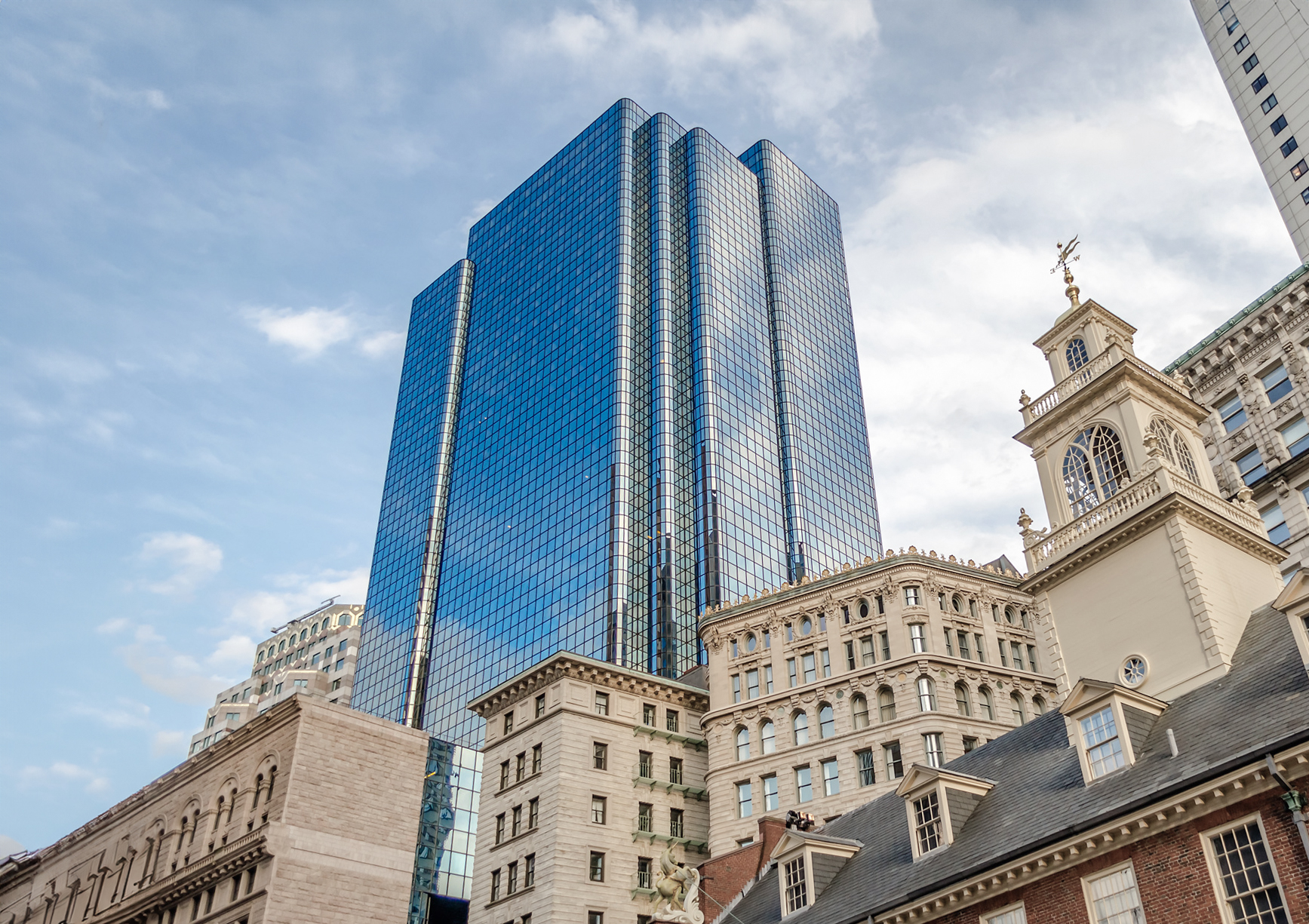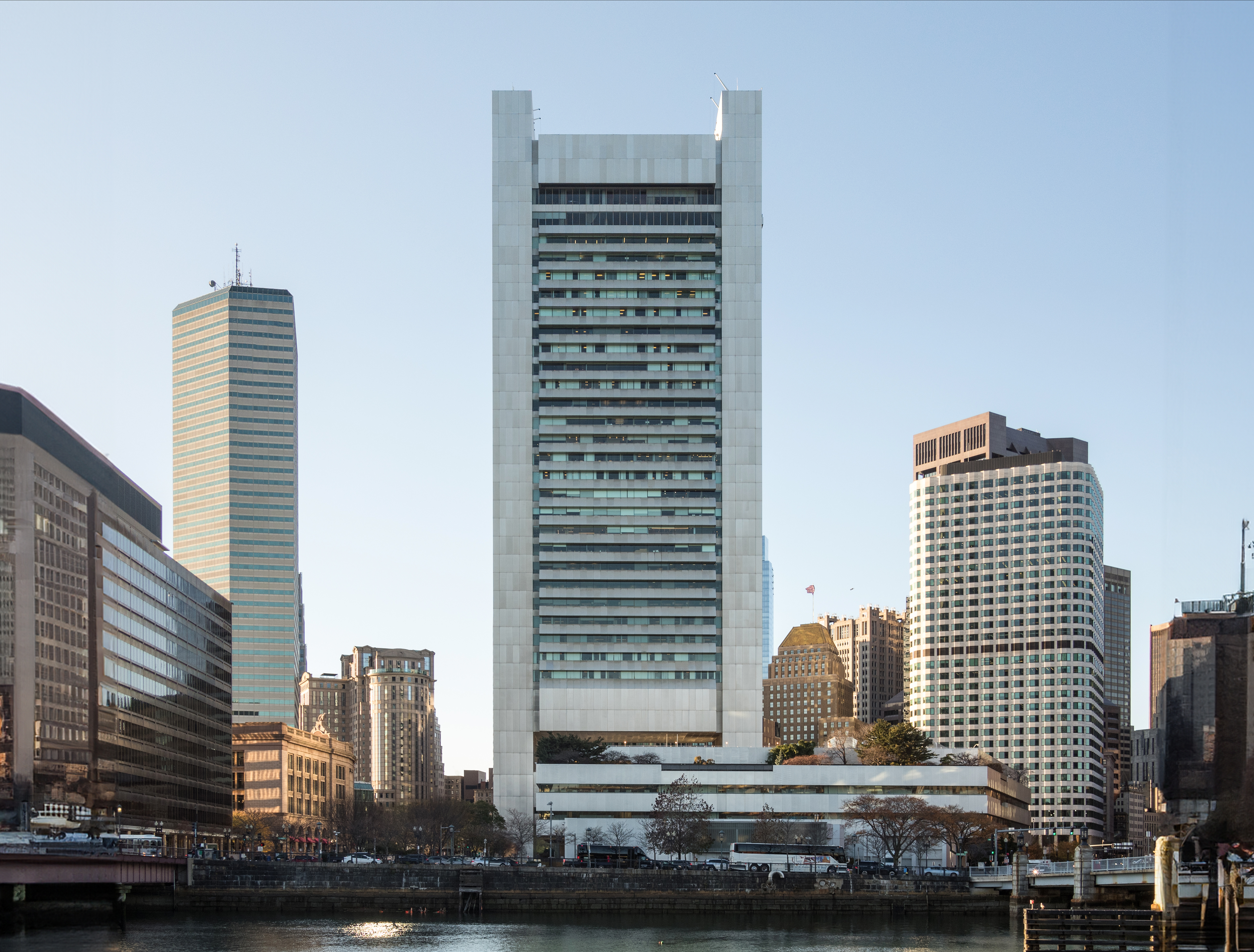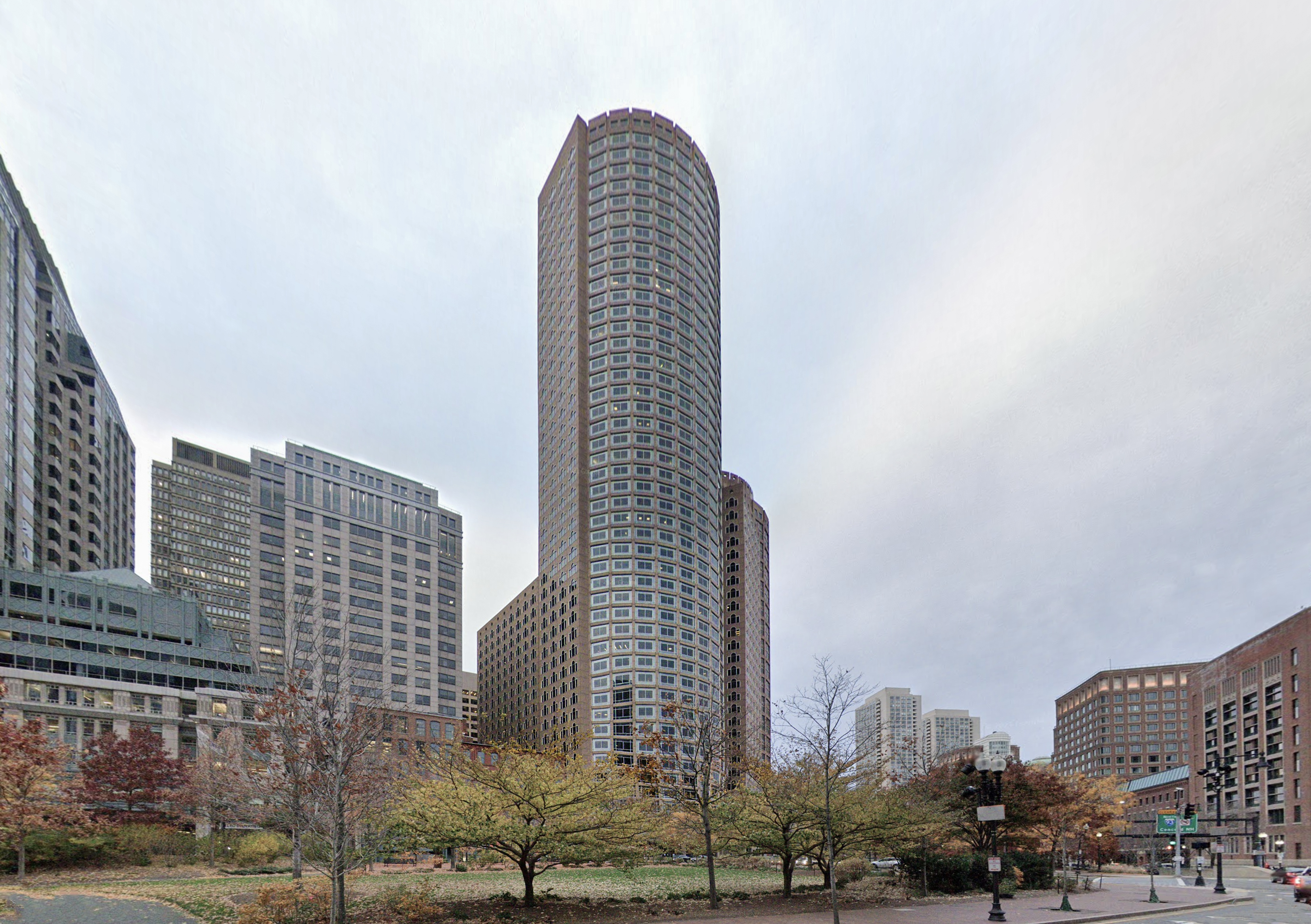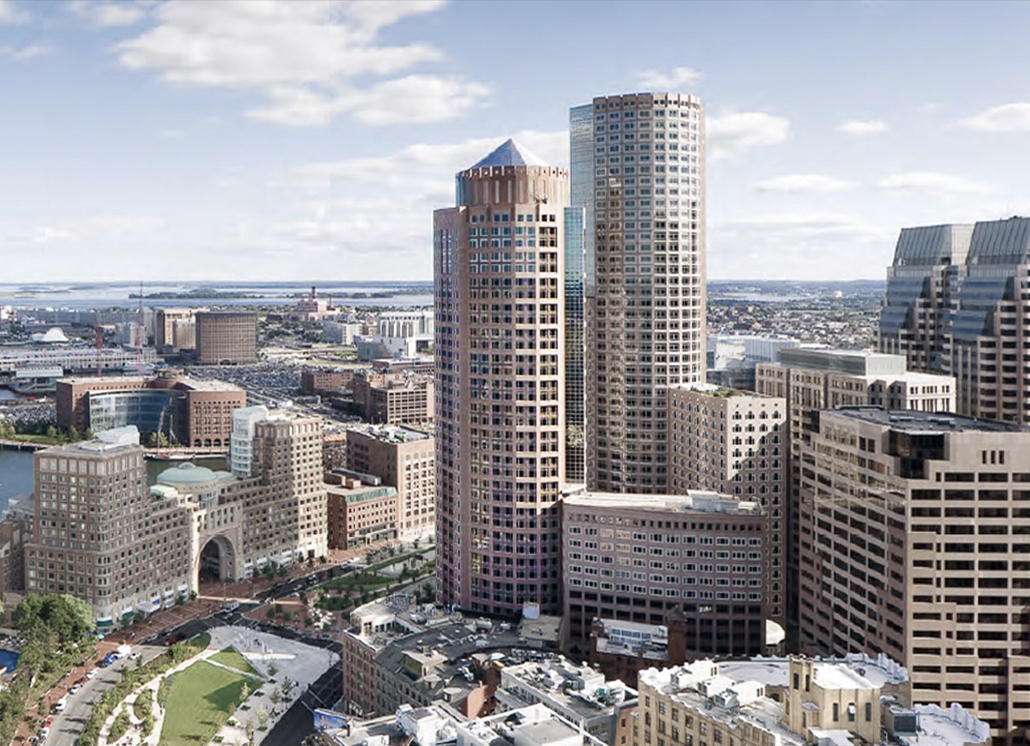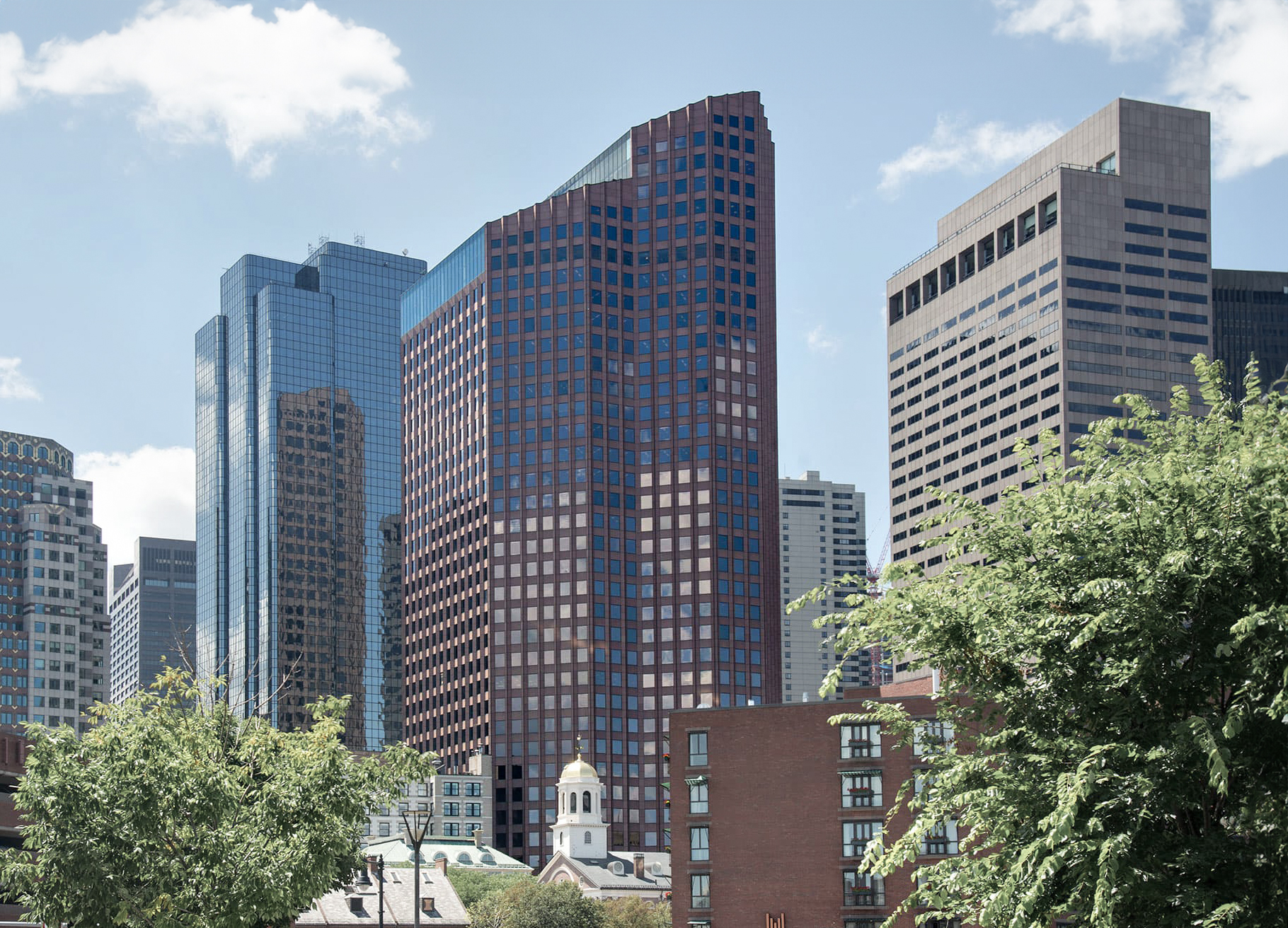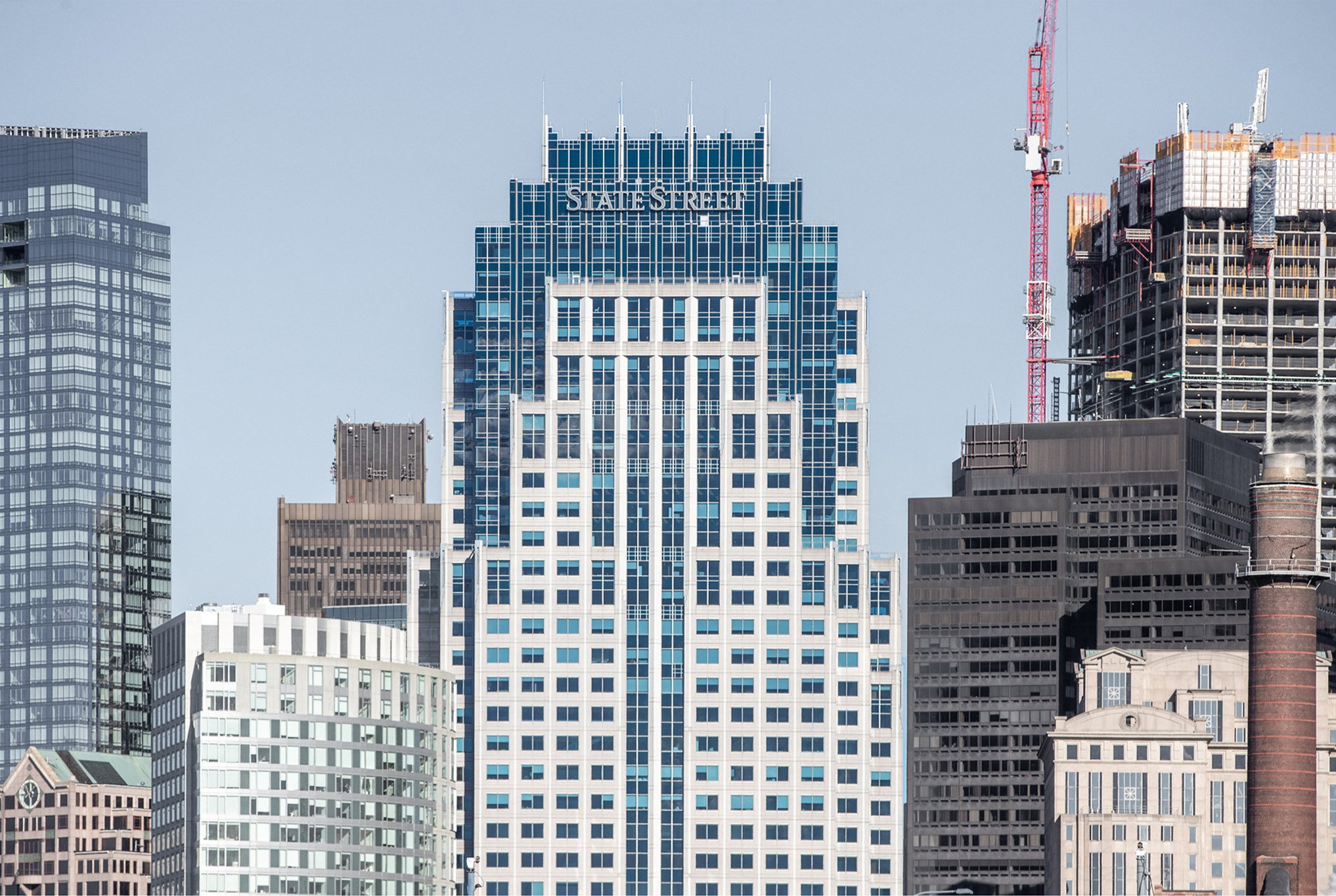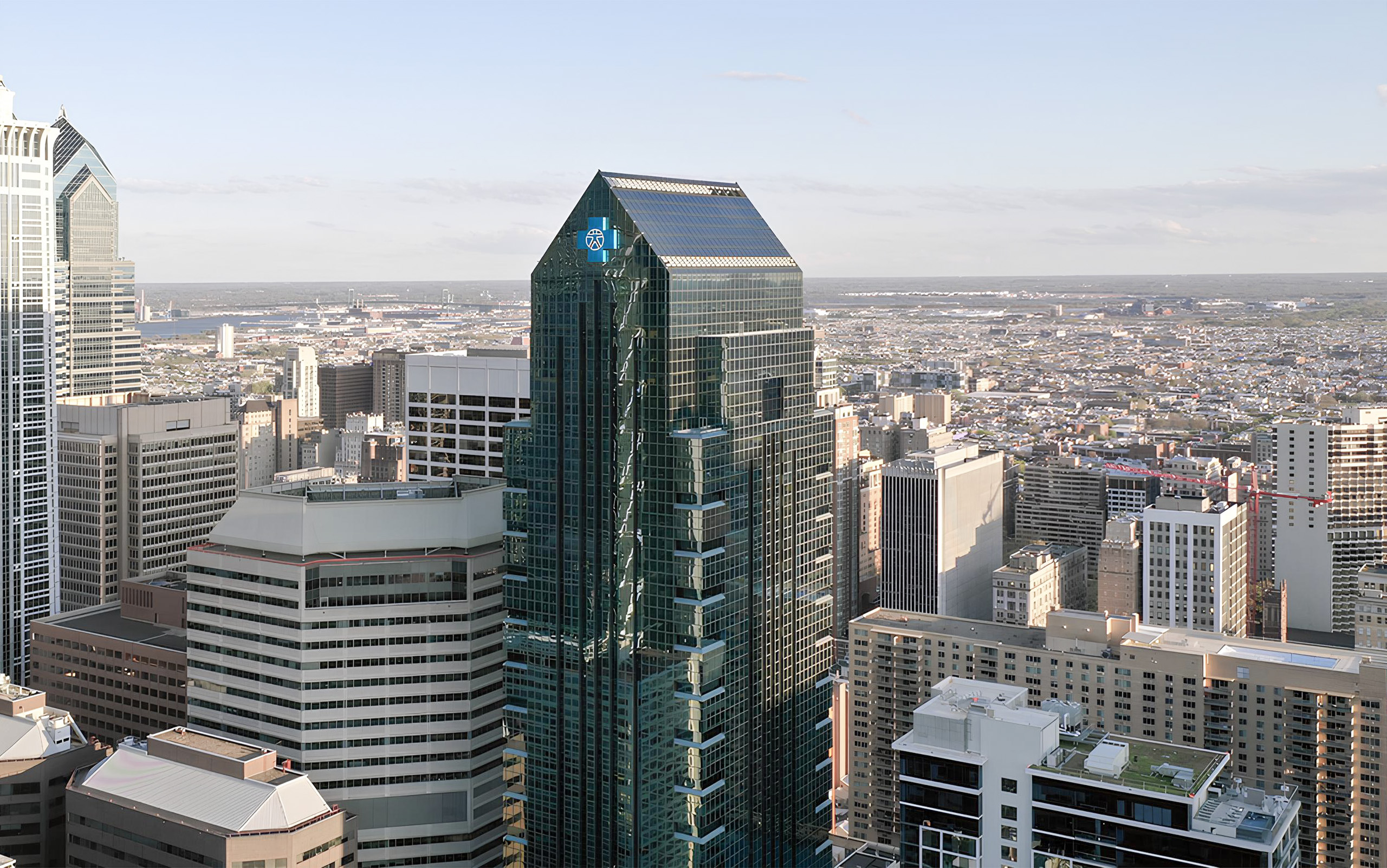The Exchange Place Building is a Postmodernist skyscraper designed by WZMH Architects, and built between 1981 and 1984 in Boston, MA.
Its precise street address is 53 State Street, Boston, MA. You can also find it on the map here.
The Exchange Place rises alongside the old facade of the Boston Stock Exchange, a classic architectural piece originally built in 1896 and remodeled in 1985 to include the glass tower. A five-story atrium connects and unifies the two buildings, which are now known collectively as Exchange Place.
